Videos of the planets
Here you can download several videos of the planets (in .avi format) made by amateur astronomers around the World. They enable you to practice the image processing techniques.
| |
. | ||||||||||||||||||||||
|
 |
||||||||||||||||||||||
Videos of the planets
| |
. | ||||||||||||||||||||||
|
 |
||||||||||||||||||||||
Jupiter |

|

+ Excellent image quality (excellent seeing) + Very easy to process Rubric: astronomy The website of Jean-Yves |
- A telescope Meade LX200 GPS 12" at f/d 30
- A webcam Philips ToUCam Pro in color
Mars |

|
|
- A telescope Newton 400 à at F 4.5
- A webcam Philips ToUCam Pro in color
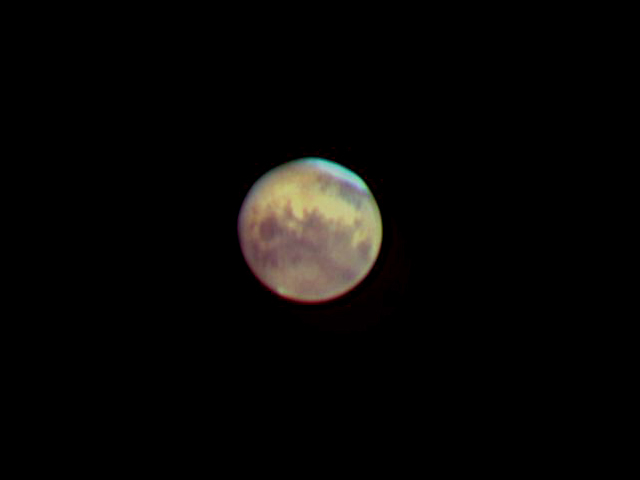
|

+ Good image quality (seeing was quite good) + Easy to process Rubric: astronomy |
Click on the thumbnail to see a raw image of the video...
- A telescope Meade LX200 GPS 10"
- A webcam Philips ToUCam Pro 2 in color
- A TeleVue 3x barlow lens
With this astronomy video, you can learn about the processing of color videos. This also demonstrates how dust spots that appear on the video are automatically removed by the processing (no need to do a flat-field).

|

+ Good image quality (seeing was quite good) - Residual dust (easy to remove) Rubric: astronomy |
- A telescope Meade LX200 GPS 10"
- A webcam Philips ToUCam Pro 2 in color
- A TeleVue 3x barlow lens
- A tele-extension to enlarge the image.
You will need to use the technique of flat-fielding to remove any dust spots that appear on the images.
Saturn |

|
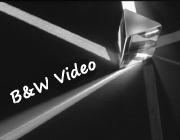
+ Good video, easy to process - Artefact (at the right of the globe) Rubric: astronomy |
ATTENTION: The video is in black and white (to obtain better images). The output image you get will then be combined with
a color image
(eg this one: here) in a specialized software, eg Photoshop using the technique of layers explained here.
![]() How to download the video
How to download the video

Or here
(http://en.softonic.com/s/winrar)
Equipment used:
- A telescope Meade LX200 GPS 10"
- A webcam Vesta Pro with a 1/3" b&w sensor
- A TeleVue 3x barlow lens
- A tele-extension
Astronomy tutorial essential to deal with a planetary video in B & W:
Click here

|

+ Very good video - Difficult to process (dust) Rubric: astronomy |

Or here
(http://en.softonic.com/s/winrar)
Equipment used:
- A telescope Meade LX200 GPS 10"
- A webcam Vesta Pro with a 1/3" b&w sensor
- A TeleVue 3x barlow lens
- A tele-extension
Without flat |
With flat |
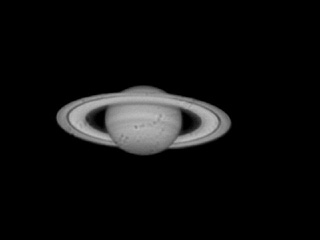 |
 |
A flat-field image and the corresponding flat-field video (useful if you want to remove dust) made with a white sheet and the telescope:
FLAT 1 (.bmp image)
And another made with Iris, in order to remove dust:
FLAT 2 (.bmp image)
Fast processing with Iris of an "avi" file of a planet, but less efficient than the manual method:
Click here
(function compute_trichro1)
Astronomy tutorial essential to deal with a planetary video in B & W:
Click here

+ Exceptional quality for a video in color (excellent seeing) - RGB channels difficult to add perfectly together. Rubric: astronomy The website of Marc |
- A telescope Meade LX200 GPS 10"
- A webcam Philips ToUCam Pro 3 in color
- A TeleVue 3x barlow lens

|

+ Good image quality - Noisy video Rubric: astronomy |
Click on the thumbnail to see a raw image of the video...

- A telescope Meade LX200 GPS 10"
- A webcam Vesta Pro with a 1/3" b&w sensor
- A TeleVue 3x barlow lens
Venus |
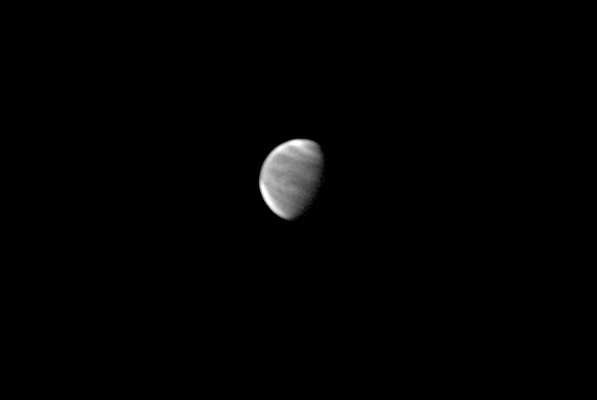
|

+ Good image quality (seeing estimated to 6/10 by Christophe) + The cloud bands are visible (very rare on Venus). -> Venus : 14.7 of arc second, -2.6 of declination, height: 35-40°, phase: 74%. Rubric: astronomy The website of Christophe |

Or here
(http://en.softonic.com/s/winrar)
Equipment used:
- A Cassegrain Astrotelescope 10" telescope at F/D 34
- A Lumenera SKYnyx 2-0 M camera, at 22 images/s
- A filter UV Schuler 365nm
The Moon |
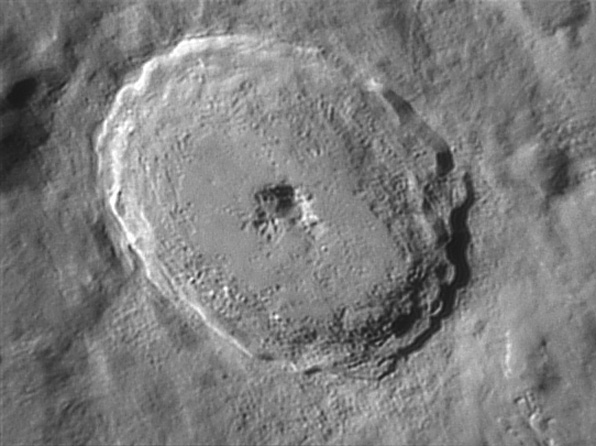
|

+ Very good video + Easy to process Rubric: astronomy The website of Rolf |

- A telescope Newton 400 F/D 4.5
- A webcam Philips ToUCam Pro
Astronomy tutorial essential to deal with a planetary video:
Click here
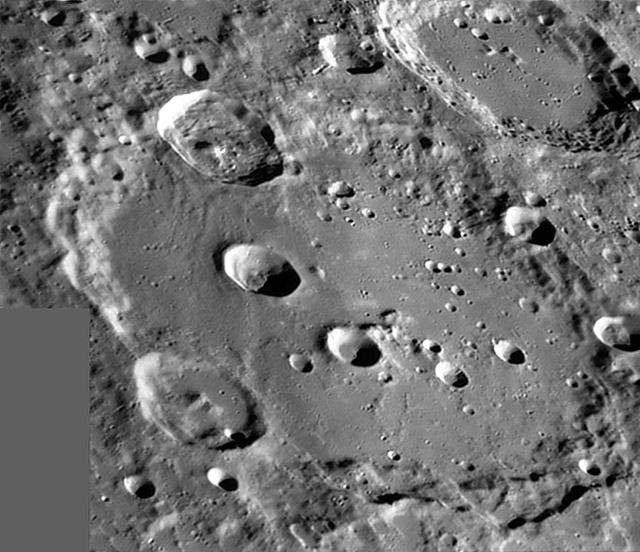
Full version here ! |

+ Excellent image quality ! Rubric: astronomy The website of Rolf |
Part 1 Number of clicks : 71936 
|
Part 2 Number of clicks : 2127 
|
||
|
|
|
||
Part 3 Clicks : 155931  |
Part 4 Clicks : 1952  |
||
|
|
|
- A telescope Newton 400 F/D 4.5
- A webcam Philips ToUCam Pro

Except for a few videos, all of the videos about the planets seen on this page have been made with a telescope Meade LX200 10 "(not a new LX200 ACF). The Headquarters of Meade is based in the USA and the firm shows a wide range of telescopes starting with the ETX, then the LX90 and finally the high-end LX200, with a good price for money ratio. The new version of the LX200 classic is the LX200 ACF, which differs from its brother by the optical formula. Indeed, the Meade LX200 ACF telescope is a pseudo coma-free Ritchey-Chretien while the old model is a Schmidt-Cassegrain. Thus, the new one is more suited to the photography of stars because it has a field of view without coma. Astronomical telescopes at entry level seen on Meade's website are not particularly appreciated by the community of amateur astronomers: you can find plastic and the goto system - although effective - is not very useful because it operates on small aperture telescopes that can't solve details on the galaxies and other objects of the deep sky. You'll no doubt have the opportunity to see many photos taken with Meade telescopes on the forums of astronomy. Without wishing to advertise for the brand Meade, I think that these telescopes (from Meade LX90 to LX200 ACF) have a large potential on ccd imaging and video. If you are photographing with this type of telescope, be aware that you'll be forced to limit the length of your exposures in order to avoid the field rotation effect which is inherent with alt-azimuth mounts. Fortunately, it is easily removed by a computer (see technical section of my site). For deep sky imaging, it is necessary to have a wedge placed below the fork mount. Celestron is the direct competitor of Meade, but I'm not familiar with this brand, so I won't say anything about it. I describe in more detail my views on Meade's astronomy equipment on this page. |